Article

This is the seventh in a series of posts on the enterprise cloud market—its economics, customer segments and the opportunities for technology providers.
The Rule of 40—that is, the principle that a software company’s combined growth rate and profit margin should exceed 40%—has become an important gauge of performance for software companies (see the Bain Brief “Hacking Software’s Rule of 40”). Companies that beat that 40% mark are, on average, three times more valuable in terms of total enterprise value to revenue than businesses that fall short of the 40% mark (see Figure 1).
Companies that beat the Rule of 40 have much higher valuation-to-revenue ratios
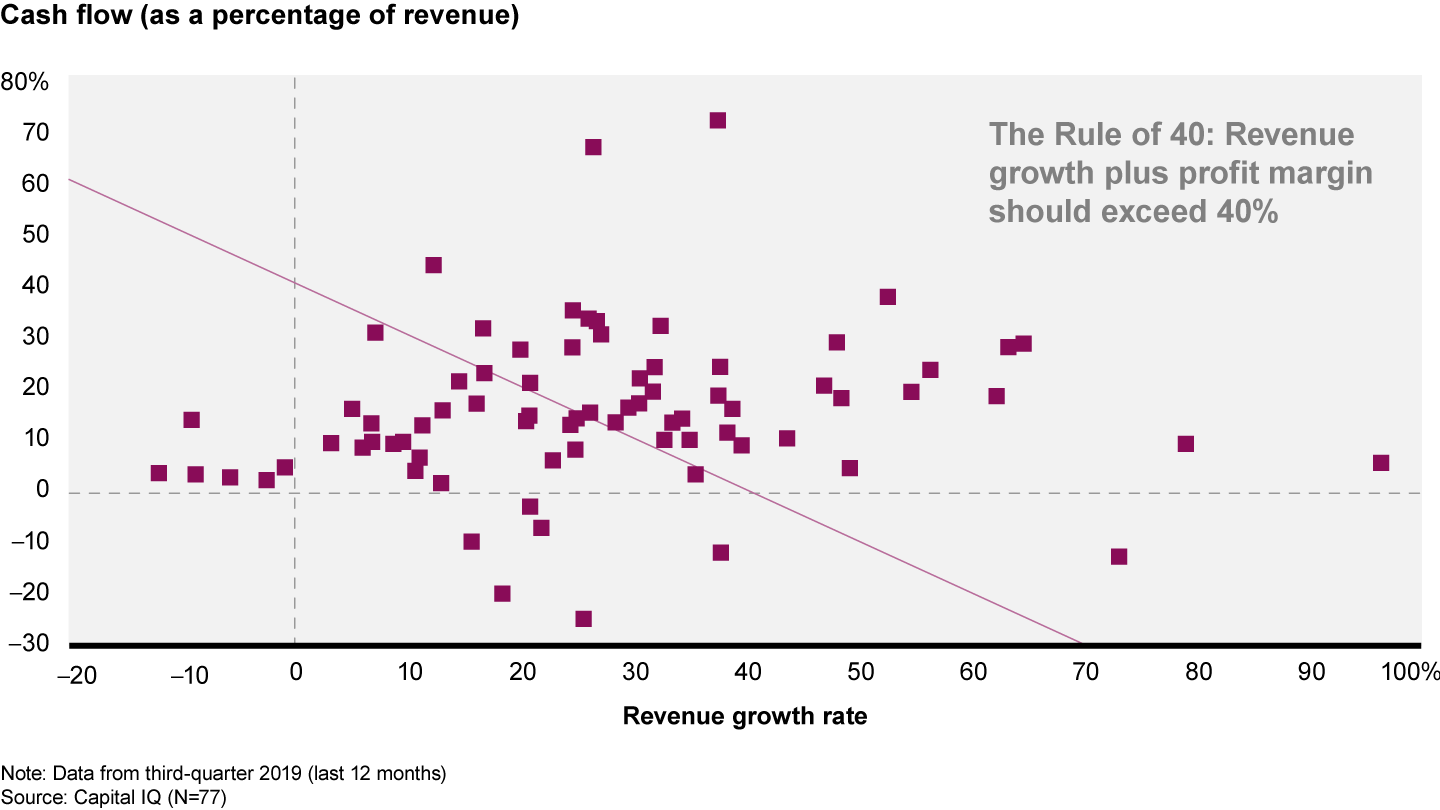
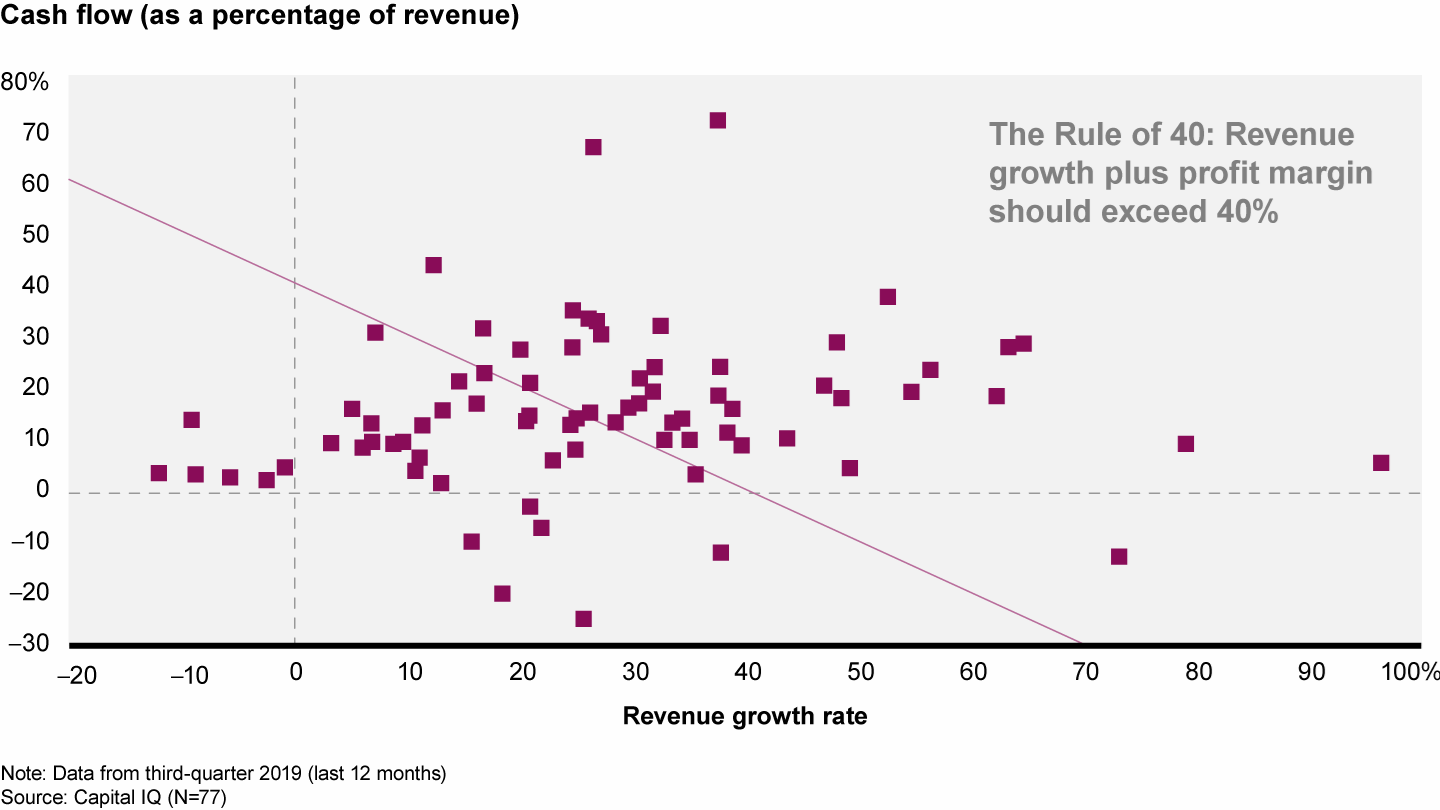
Written in conjunction with
Written in conjunction with
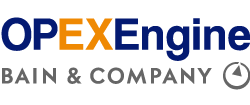
Most executives know that the market rewards software-as-a-service (SaaS) companies more for growth than profitability. We were surprised, however, by how much more: Our research found that higher growth delivered twice the improvement on enterprise value as stronger cash flow (see Figure 2). Given this, SaaS executive teams who want to maximize their value should not prioritize operational improvements over growth (see Figure 3).
Higher growth has about twice the effect of improved cash flow for software-as-a-service companies
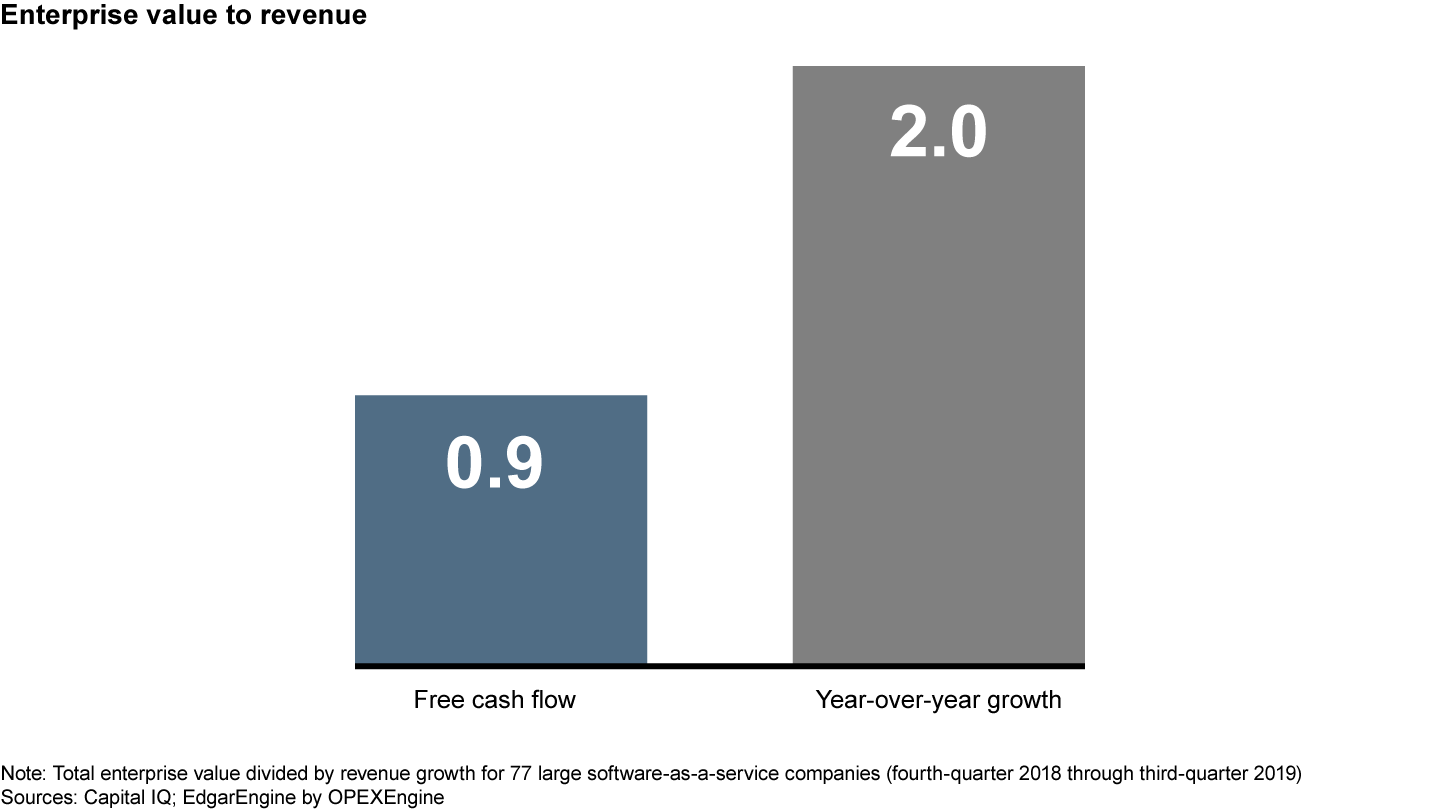
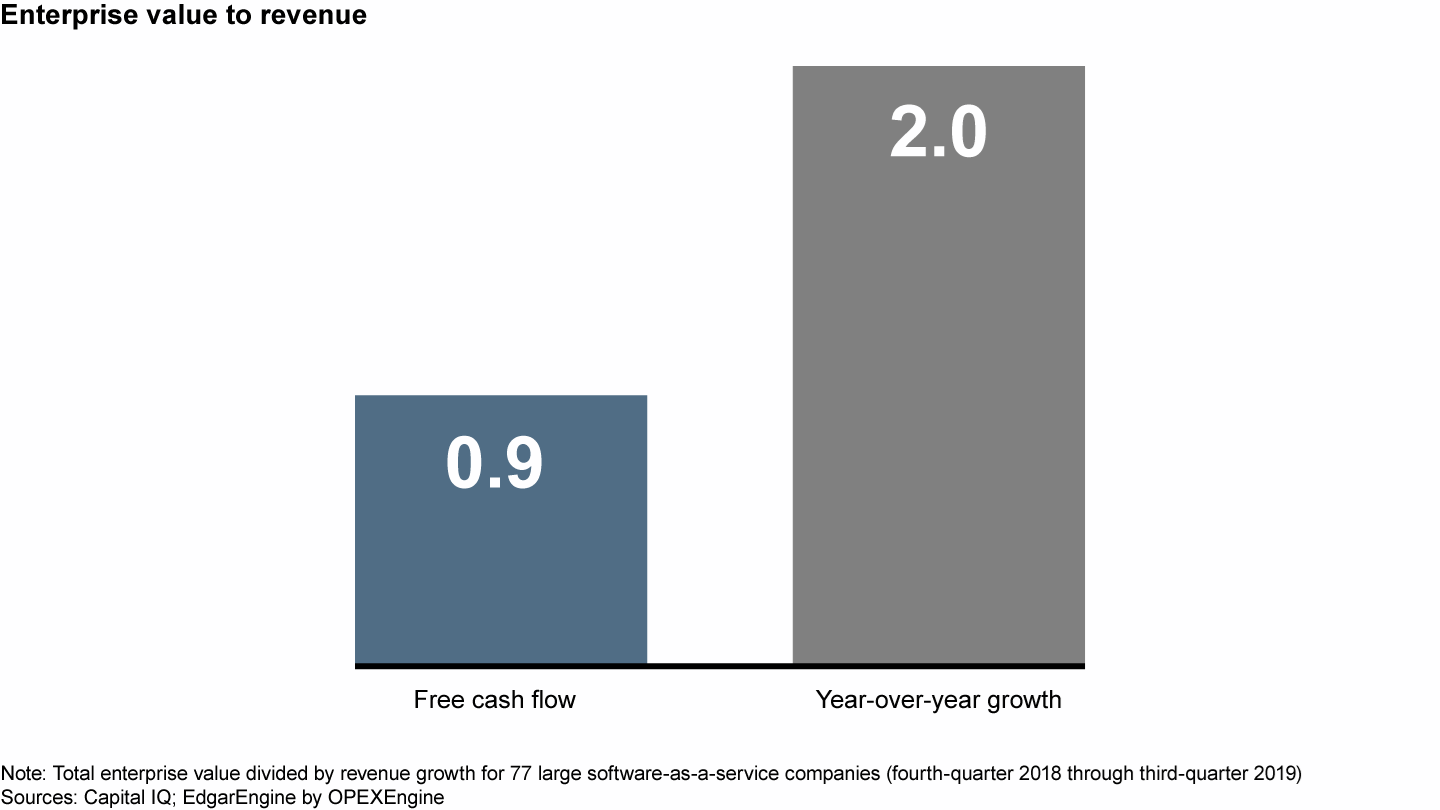
Since the market rewards growth over profitability for software-as-a-service companies, operational improvements should not come at the expense of growth
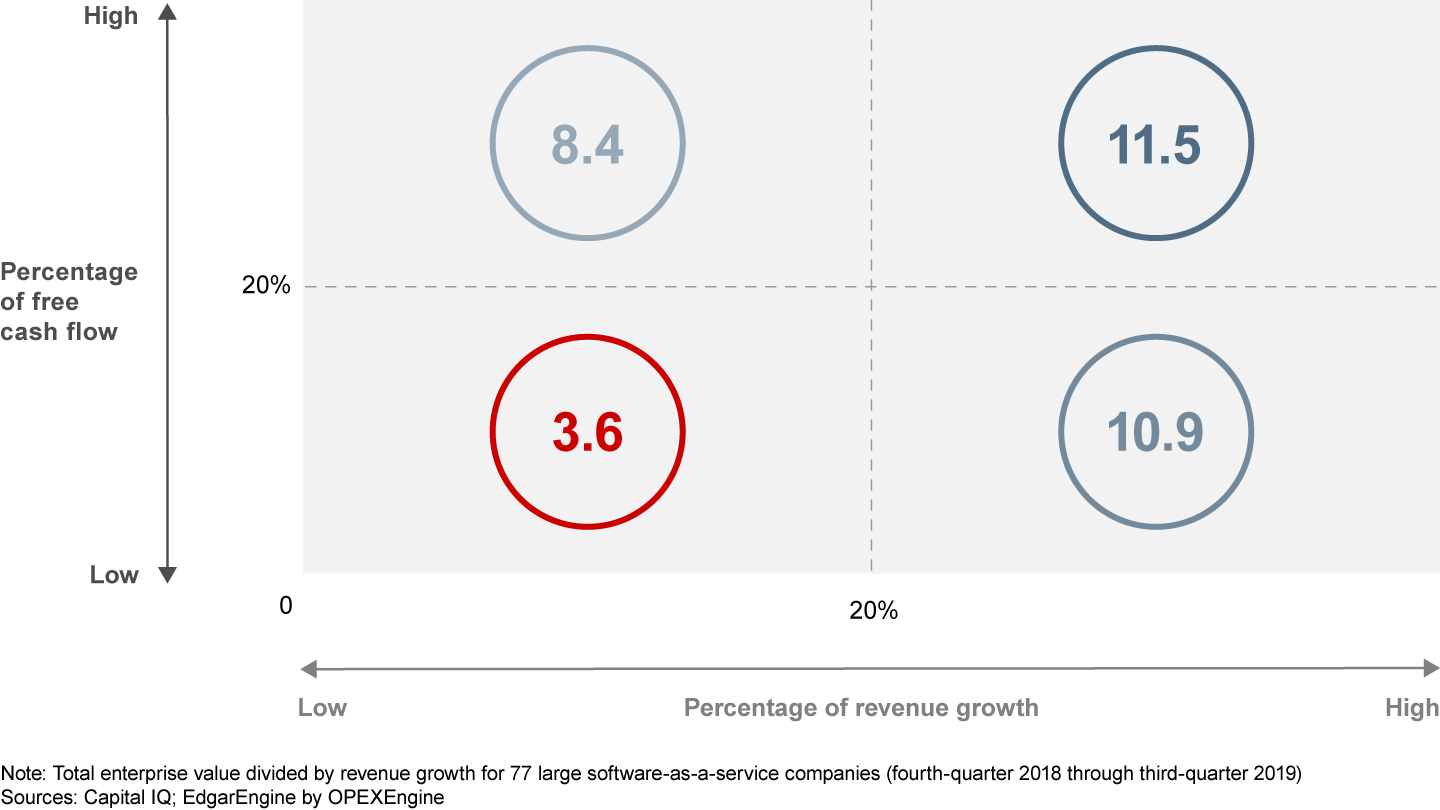
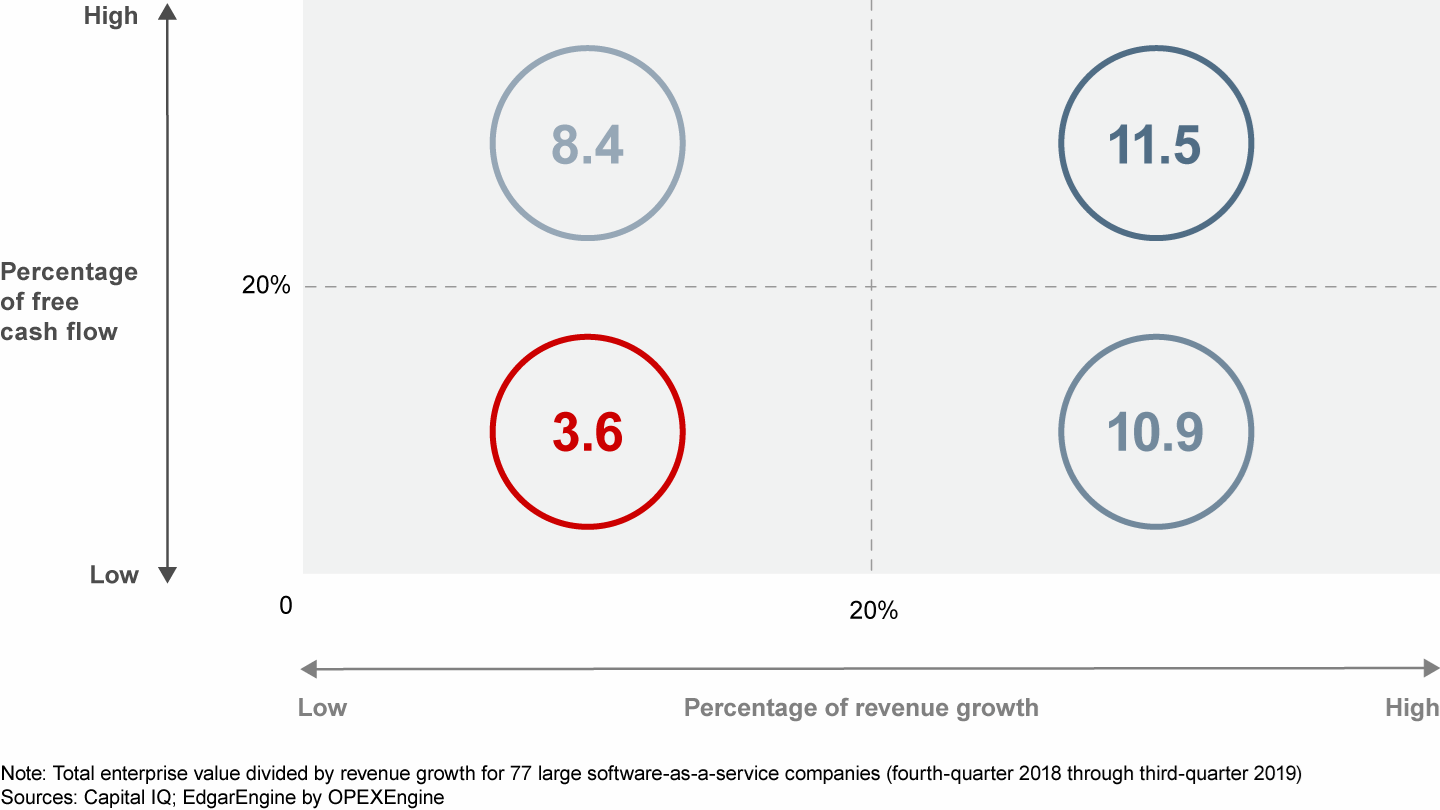
That said, some operational benefits are more valuable than others. Bain and OPEXEngine analyzed 2019 financial data for nearly 80 SaaS companies and found those that beat the Rule of 40 scored highly on five operational benchmarks. Put another way, these are five capabilities that the most successful SaaS companies are performing better than their peers—and the market is rewarding them for it.
- They are good at retaining their employees. Of the five leading indicators for a software company to beat the Rule of 40, employee retention was the most important. Leaders in software (and every field) understand that customer satisfaction correlates with employee satisfaction, and so they devote resources to ensuring both. Of course, in the wake of the coronavirus pandemic, employee satisfaction is likely to depend on different factors than before, so taking into account changes in staffing, work spaces, travel and safety, senior executives will need to change the way they measure and manage satisfaction, too.
- They spend efficiently on sales and marketing to generate revenue. Keeping the “magic number” high—that is, the ratio of revenue growth to spending on sales and marketing—turns out to be another critical indicator regarding Rule of 40 performance. In essence, this measures the productivity of the salesforce to generate incremental revenue, thereby reflecting whether the salesforce is geared toward growing the business.
- They ensure that customers have a high lifetime value. Leaders show better customer lifetime value–to–customer acquisition cost ratios. They do a good job targeting the right customers and delivering products that return high value over extended periods. Companies across industries are improving this metric with investments in digital that take costs out of the customer acquisition process. Digital native SaaS companies have an edge on this capability over incumbents; leaders push their advantage to take costs out wherever they can.
- They keep operating expenses (opex) in check. The global recession resulting from the Covid-19 pandemic will compel most companies to reduce expenses. Software companies that beat the Rule of 40 already have better opex-to-revenue ratios. Their product development processes are efficient, which means they’re not investing to develop products that go nowhere. Many are ruthless in culling the development pipeline, pulling investments from less promising ventures so that they can focus on the most promising opportunities. In addition, they have highly productive sales organizations, they keep administrative costs in check and they invest in customer success.
- They nurture growth from their existing customers. Companies that beat the Rule of 40 are more efficient in developing new revenue from existing customers, including upgrades and cross-selling. But they not only focus on the growth end of the spectrum, they also do a better job limiting customer churn. Keeping customers happy helps these companies grow from within.
While most IT budgets have been cut in the months since Covid-19 began taking a toll on commercial and industrial activity, many enterprise software buyers are planning to increase spending on SaaS products across categories, particularly in security and collaboration as more employees work from home during lockdowns (see the Bain Snap Chart “Lockdowns Spike Spending on Collaboration and Software Tools”). This, along with the trend away from on-premise software, suggests that even in a time of economic hardship, many SaaS companies should be able to continue their trajectories of growth and beat the Rule of 40.